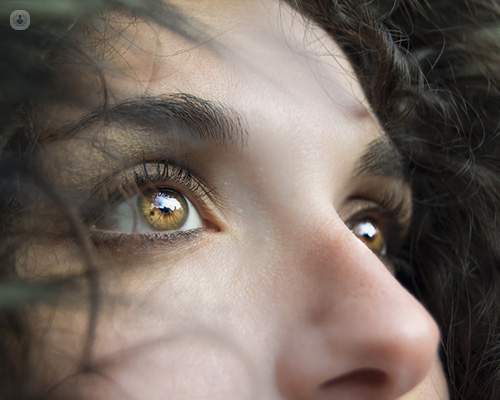Why are diabetic patients at risk of eye disease?
Escrito por:In diabetes, the body is unable to control blood sugar levels which can cause high blood sugar. This, in turn, can lead to changes in the tiny blood vessels in the retina at the back of the eye leading to bleeding in the retina or blockage of blood vessels. This is called diabetic retinopathy. Sometimes these changes affect the blood vessels nourishing the central part of the retina (called the macula). When this happens, our vision can become blurred and some people can go blind if diabetic retinopathy and maculopathy are not detected early.

Is the risk the same of type 1 and type 2 diabetic patients?
Both type 1 and type 2 diabetes can lead to vision loss due to diabetic retinopathy although researchers believe that in type 1 diabetes, severe forms of diabetic retinopathy are more common leading to bleeding into the gel compartment of the eye (the vitreous), while in people with type 2 diabetes, diabetic maculopathy caused by changes in blood vessels supplying the macula leads to swelling of the retina (diabetic macular oedema) and vision loss.
Is damage from diabetic eye disease reversible?
Although damage from diabetic eye disease is reversible to some degree, the best approach is to avoid or prevent severe diabetic eye disease from developing in the first place. The best chance of this is through controlling diabetes, preventing high blood pressure and keeping a low blood cholesterol level. Attending regular diabetic retinopathy screening visits is the best way of detecting diabetic eye disease at an early stage before it becomes more difficult to treat.
What are the goals of treatment?
The goals of treatment include making sure people look after their health to keep their diabetes under control, avoid high blood pressure and keep blood cholesterol levels under control. This will help reduce the risk of vision loss through diabetic eye disease. Specific treatments for eyes affected by diabetic eye disease (proliferative diabetic retinopathy and diabetic macular oedema) include types of laser treatment and eye injections (intravitreal injections of Eylea, Lucentis or Avastin)
How often should diabetic patients have an eye check?
People with diabetes should have diabetic retinopathy screening eye checks on an annual basis and more frequently than this if potentially significant changes are found. Sometimes people are referred for more tests to hospital eye clinics if moderate or severe changes are found in the retina during the diabetic retinopathy screening eye check. Some people worry about what happens at a diabetic retinopathy eye check but thankfully the test is simple and straightforward. They are eye checks organised by the NHS close to where you live. You will be asked to bring your glasses or contact lenses to the visit and the appointment usually lasts less than an hour.
The appointment will start by seeing how well you can see. Next, eye drops will be put into your eyes to make your pupils larger. The drops can take 20 minutes to work and can blur the vision for a few hours. You won’t be able to drive home from your appointment so it might be best to take someone along with you to the appointment or to take public transport. At the diabetic retinopathy eye check, people have eye drops to make the pupils of the eye larger. A technician will then take photos of the retina but the camera won't touch your eye.
Both you and your GP will get the results of the retinal screening within 6 weeks. If the results show retinal changes which need further assessment or if the photos are not clear enough to give an accurate result, you will be referred to a hospital eye clinic. If there are mild or no changes then you will be invited back for another screening appointment a year later.
Learn more about diabetic retinal screening or book an appointment with a specialist.


